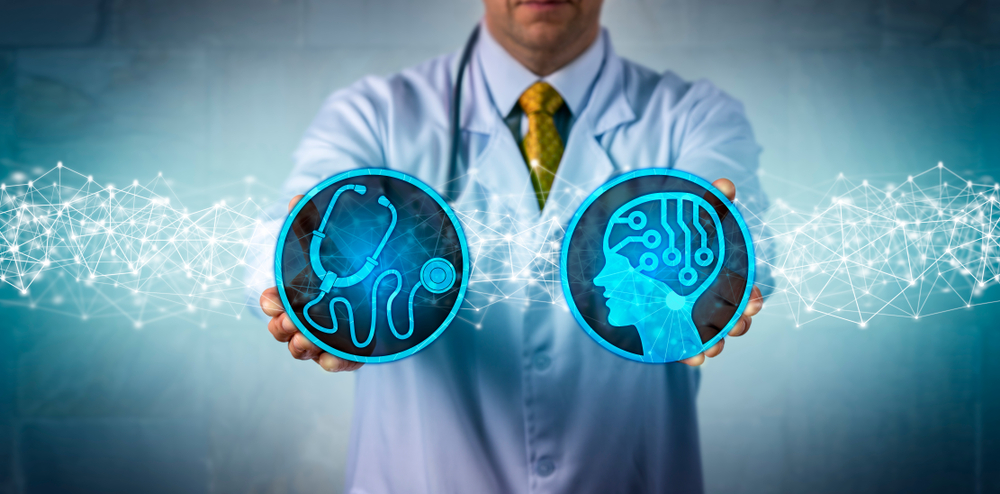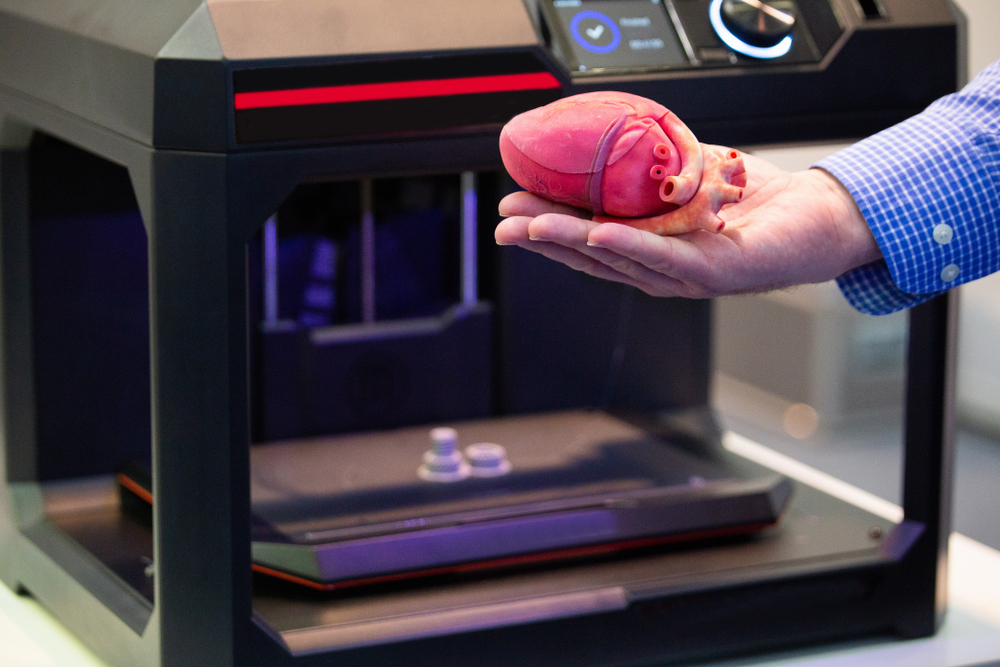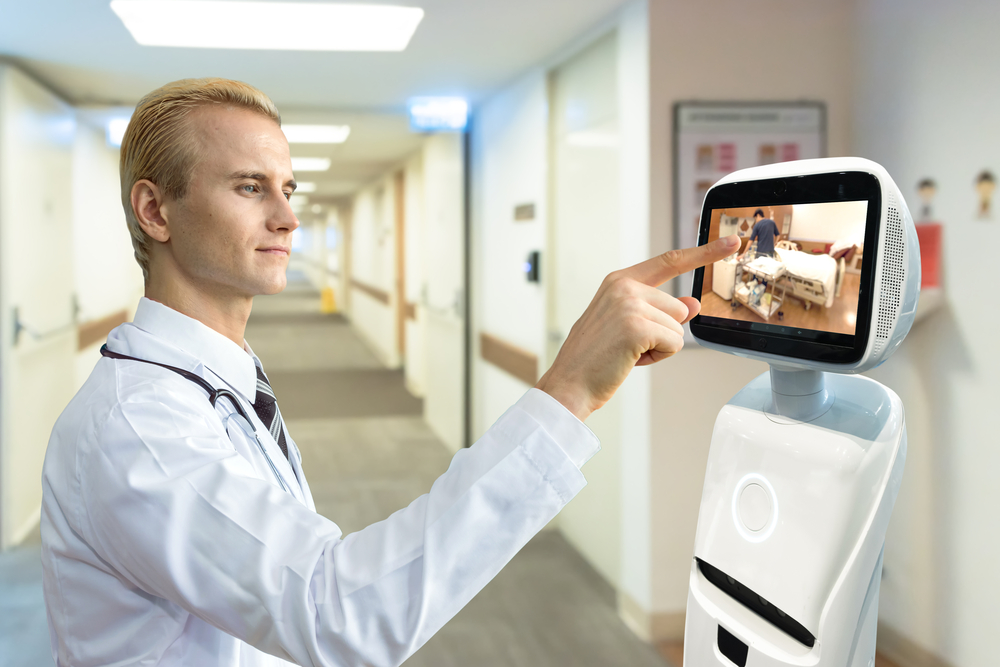The movie industry is full of sci-fi showing robots make an accurate diagnosis after a quick scan, prescribe an effective treatment plan, and perform complex surgery — all without human assistance. And while some shrug it off as just a figment of the filmmakers’ imagination, others are not so skeptical: they believe that with the global medical AI market growing fast, the only question is, “When will robots replace doctors?”
At Demigos, we’ve been building effective medical solutions for more than five years. We know this market from within, and we can tell for sure in what direction it’s heading.
In our opinion, the question about the future of AI in healthcare should instead sound like, “Where can artificial intelligence replace doctors?”
This article will guide you through the areas where AI is better than human medical experts. We’ll explain the reasons why we probably can’t replace doctors with AI and how smart tech will transform healthcare in the future.
Areas where AI technologies outperform medical specialists

Based on 2020’s Olive and Sage Growth Partners survey, nine in ten leading US healthcare organizations have developed an AI implementation strategy. This is a huge increase from 2019 when every other respondent had no automation plan in place. But what makes artificial intelligence so beneficial to healthcare? Let’s take a look at the areas where it performs better than humans.
See also How We Make an Online Medical Second Opinion Software
Anomaly detection

With its proven ability to see what’s invisible to the human eye, AI excels at anomaly detection. In a 2018 study, deep learning (DL) models could detect cancer tumors on ultrasound images with the accuracy of a radiologist. The only difference is that it took the researchers seven minutes to train their models, while radiologists spent years honing their diagnostic skills.
Medical imaging analysis software is just one example of how we can apply AI’s anomaly detection capabilities. There are also apps that diagnose skin cancer with a dermatologist’s accuracy, algorithms that identify eye diseases, and many others.
Disease prediction

Acute kidney injury (AKI) — a condition when kidneys suddenly stop functioning properly — affects over 13.3 million people yearly. AI seems to be on its way to improve these disturbing statistics.
In partnership with DeepMind Health, the U.S. Department of Veteran Affairs (VA) has developed an ML algorithm that can predict AKI up to 48 hours before it happens, giving doctors enough head start to prevent the disease. The next task of the partnership is to integrate this solution into the real-life medical workflow.
But the best part is that AKI isn’t the only condition that AI can forecast. Another example is CloudMedX solutions that focus on decoding unstructured EHR data and predict some of the most common high-risk diseases, including hypertension, liver cancer, and stroke.
3D printing and AI-assisted surgery planning

3D anatomical models can give clinicians insights essential for effective surgery planning. However, the technology isn’t widely adopted yet due to the specifics of 3D model creation: to build an accurate sample of the operative site, a radiology team has to segment 2D images into multiple labeled regions. The process can take up to ten hours. But Axial3D cuts it down to a few minutes with the help of machine learning (ML).
Axial3D is an online ordering portal that allows clinicians to upload the necessary data and get a printable 3D model. Deployed on AWS, the solution can process thousands of orders at once. What’s important, patient information is anonymized before it gets into the cloud, which prevents possible data leakage during the process.
24/7 monitoring

With roughly 500,000 people dying in intensive care units (ICUs) every year, these are the most frightening places in any healthcare facility. Meanwhile, ICU patients that regularly get out of bed and move around recover faster. But how to make sure that every patient gets enough exercise?
At Stanford University and Intermountain LDS Hospital in Salt Lake City, Utah, AI researchers and medical professionals developed ML algorithms that can track patients’ physical activity 24/7.
Equipped with sensors, this patient monitoring solution can recognize movements in 87% of cases. The researchers keep improving their brainchild. The next goal is to train their models to alert medical staff when a patient is in trouble.
To learn more about ML in the medical field, read our recent article.
But will AI replace doctors? Here’s why not

There’s no denying that the medical AI market is brimming with innovations that crop up at an astounding rate. Given that, it’s easy to jump to the conclusion that clinics will inevitably replace doctors with artificial intelligence one day. But in all likelihood, it will never happen, and healthcare providers don’t need to worry about their careers. Here’s why.
Robots can’t show empathy
Empathy is one of the key elements of quality healthcare. It improves patient satisfaction and promotes healing. Unfortunately, empathy is unachievable for an automated machine, and that’s the main argument against autonomous AI in healthcare.
Though AI can outperform doctors in a variety of tasks, it can’t become a human being. Only a flesh-and-blood clinician can support a patient during a challenging treatment process, hold their hand while breaking life-changing diagnosis news to them, entertain a scared child during a blood draw, or genuinely worry about their patients. We might teach robots to mimic these things, but sincerity can’t be taught.
People dislike robots
Boston University actually proved it. A series of surveys showed the following:
-
In a survey with 200 Boston University students, they discovered that 40% of the participants would agree to sign up for a free health assessment carried out by a human medical specialist, while only 26% would choose AI over a doctor.
-
In another survey, most respondents preferred a human physician to a better-performing AI healthcare provider.
-
The third experiment revealed that people are ready to pay more for a human healthcare provider than for their AI counterparts with the same level of diagnostic accuracy.
Since healthcare centers around patients, such resentment can become a significant hurdle to the adoption of medical services fully driven by AI. Still, this might be a temporary issue. But how many years will it take for us, people, to change our attitude toward machines?
Robots can’t deal with a lack of data
Machine learning models are trained on real-life cases. The more data they are fed — the better they perform. For example, Corti, an emergency staff assistant, improves itself with each successive case. Solutions like Corti can sift through loads of data in a strikingly short period of time, much faster than humans, so it might seem that artificial intelligence will replace doctors in the nearest future.
But how about dealing with a lack of data? Patients might be unwilling to share certain information, or their case might be rare. Robots haven’t been trained to deal with a lack of data so far. And that’s where we, humans, with our gut feeling and out-of-the-box thinking, step in.
Do you remember that episode from the House TV series where the boy was poisoned, and the team couldn’t figure out what the poison was and where it came from? They sifted through many options until they accidentally learned that the patient picked up the insecticide from the jeans he’d bought shortly before. Now, try to replace medical specialists with AI technology in this scene. Sure, computers can’t work this way.
AI needs predictability
If we take a closer look at AI solutions, we’ll notice that they perform best in a stable, predictable environment. They can go through terabytes of data to identify patterns, detect “invisible” anomalies in CT scans, and recognize movements in a patient’s ward. But what about complex tasks where a sequence of unique actions is needed?
Let’s take surgery, for example.
The process involves interpreting what is going on in soft tissue, then acting on that tissue, seeing how it responds, taking action based on its response, and so on. According to robotic scientists, when it comes to non-linear tasks, we can’t replace medical staff with artificial intelligence like this just yet. The same goes for complex treatment processes.
What’s the future of AI in healthcare?

There’s plenty of tasks that AI can’t complete, but a flesh-and-blood doctor can. And vice versa. But will doctors be replaced by robots? We don’t think that this will ever become a reality. Both AI and humans show better results when they complement each other rather than work in isolation.
According to Accenture, companies that promote human and AI collaboration show up to six times better outcomes than those focusing on humans or machines alone. Meanwhile, in a breast cancer screening study, radiologists were more precise at detecting breast cancer when assisted with AI than when either radiologists or AI worked unassisted.
Here’re a few examples of how exactly AI and doctors can complement each other:
-
Corti. This AI solution assists the staff of emergency services call centers. Based on what a caller says, their tone of voice, and breathing patterns, Corti helps dispatchers determine whether they are experiencing a cardiac arrest and need CPR guidance. Can AI replace human doctors in this case? No. But being 23% more precise at recognizing a cardiac arrest than a dispatcher, Corti significantly increases the patient’s chances to survive.
-
DeepMind’s image segmentation algorithm. To eradicate tumors with radiation, doctors first have to map out the treatment area down to the millimeter. The process usually takes up to eight hours. DeepMind’s solution can automate it: in one of the experiments, it managed to map out a delicate optic nerve, allowing doctors to carry out the procedure without affecting the patient’s eyesight.
-
Arterys Cardio AI. It automates the time-consuming MRI image preparation process. Though the solution doesn’t make a diagnosis on its own, it allows radiologists to save up to 25 minutes per study. As you can see, solutions like Arterys Cardio AI don’t replace anyone, but they free up the human experts’ time for decision-making. It’s also one way of addressing a striking shortage of radiologists.
And the list goes on. In short, AI innovations in healthcare don’t substitute human doctors. They just enhance what they already can do by taking on certain tasks. By some estimates, technology is about to replace 80% of what doctors currently do. So one thing is clear: medical experts should be aware that their jobs are going to change. Meanwhile, it’s time for clinics to focus on how they can efficiently integrate AI into their daily workflow.
Read also: Emerging medical technology trends to follow.
Conclusion
Artificial intelligence offers a host of benefits to healthcare. Accurate and available 24/7, it can automate repetitive and time-consuming tasks and quickly process huge chunks of data. At the same time, human doctors have no equal in empathy, creativity, and non-linear thinking. It’s hard to imagine what healthcare can be capable of if we combine these two “superpowers.”
If you want to tap into the fullest potential of medical AI, expert help is necessary. Whether you need to build a new solution from scratch, improve the existing one, or develop a feasible AI integration strategy in your facility, Demigos is at your service. Contact us—and we’ll get back to you to answer all your questions and help you leverage the power of AI in your particular case.






